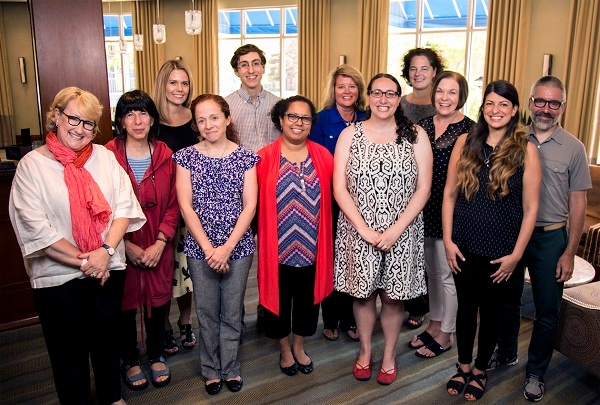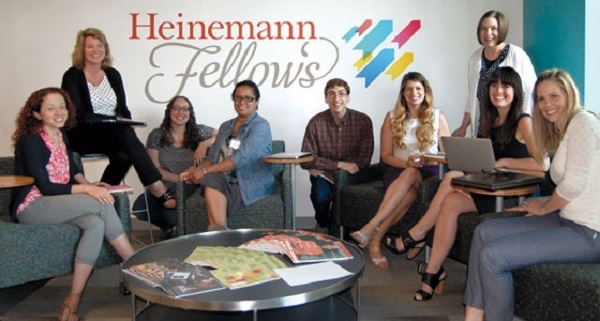
Michael Pershan is a Heinemann Fellow with the 2014–2016 class, and has been an educator for five years. In today's post, Michael updates us on his continuing research project: Is written feedback or oral feedback more beneficial for fostering geometric thinking in high school students?
by Michael Pershan
I recently made a list of all the feedback I gave my 9th grade geometry students this year. It was all the feedback from the papers I managed to scan, and it came to 140 comments altogether. I wasn’t exactly sure what I was looking for, but I wanted a way to compare myself to me. What had I learned about giving feedback during this past year?
I found a deceptive consistency to the comments I gave. Take two examples:
- September: “Oh, nice catch with the triangles! What would happen if one of the original segments was longer than the other?”
- May: “Lovely stuff! Can you give a rule on your page for deciding whether to use sine or cosine?”
In both September and May I knew to start my comment with affirmation if I could. I knew to follow up that praise with some sort of thought-prompting question, one that might spur a student to think about something new, important, and fantastic. I also knew that thinking about something new and important is hard, and I gave students time in class to develop and revise their initial thinking.
But at the same time I see that my work has changed in two important ways. One difference in my feedback is visible—my “asks” have changed—but the other is lurking in the background of my comments, and is more important to identify.
In September, I asked a student, “What would happen if one of the original segments were longer than the other?” To different students on the same assignment I asked, “How can you be sure that these lines actually connect?” and, “What would your shape look like if you hadn't turned by a right angle?” Fine questions all, but questions that asked the student to engage in mathematical thinking without asking for any particular mathematical product.
As the year rolled on, I collected a list of mathematical products that I would request from students while they engaged with an idea.
- Could you write a proof?: “Can you prove that 3sqrt(2) x 3sqrt(2) = 18?” “Can you show that this answer has to be less than 157?”
- Could you write a rule?: “Can you give a rule on your page for deciding whether to use sine or cosine?” “Can you write a rule explaining how to use your method for any polygon?”
- Could you solve a problem?: “Good start, but you can be more specific. Which ratios could measure steepness? List them all, if you can.” “Could you solve this with these new numbers?”
Asking for a product increases accountability—to the teacher, to oneself and to the math. I also think product-focused questions can be more motivating for my most tentative students. Why? Consider Kate, a 9th grader who apologized for “being bad at math” in the first week of classes. She would often freeze when I asked her to revise her thinking in some way (e.g. “What if these sides of the triangle were longer?”). I shouldn’t have been surprised, because Kate is likely to see herself in her thinking, and focus on what my feedback means in terms of her ability and her sense of self in a way that sucks away any chance of engaging in further thought. If her thinking isn’t good enough, it’s her that isn’t good enough.
On the other hand, I saw Kate dive right to work when I asked her, “Can you prove that the area has to be less than 157?” I think it’s because Kate doesn’t identify with her ability to prove mathematical claims. In fact, in class I’ve repeatedly identified proof as a tough skill that we work on all year. There’s comparatively little at stake if Kate struggles to compose a proof. I think this is generally true: feedback is less likely to hit a sore spot if it draws attention to something that everyone is working on.
Will this discourage the student? Will this question actually help?
Something else changed too, but I have a harder time describing it. It’s really the scent of a change more than anything tangible, the possibility of a big reorientation in my teaching. I caught this scent during my trigonometry unit, when I gave some feedback that I was really very happy with. Usually for me, commenting involves a great deal of guesswork and chancy reasoning. Will this discourage the student? Will this question actually help? Is this too vague? Too specific? During the trigonometry unit, none of this happened. And I think the difference is because (if I do say so myself) I had some good ideas about how students think about trigonometry.
In one early assignment, I asked students to list properties of a right triangle that determine its steepness. I asked them to try to find as many as they could. I knew what thinking to expect and I had a good sense of what each student might be able to learn next:
- You think the height of the triangle determines its steepness? You’re ready to think about how the concept of similar triangles problematizes this idea.
- You think the difference of the sides matters? Similar triangles, please! And then think about how else you can describe the relationship of side lengths using arithmetic.
- Ah, you’ve identified a ratio that locks the steepness of a right triangle in. There are other ratios of sides in a right triangle – do they lock in the steepness as well?
My feedback worked well on this assignment—my students spent nearly a whole period revisiting their earlier work, and I heard on-point arguments and realizations throughout the room—and I can’t attribute the success to subtleties of language or phrasing. It was about what I knew about how students think about similar triangles, ratios and steepness.
Getting systematic about student thinking is a nitty-gritty project.
For me, this is a destabilizing thought. The work I thought would improve my feedback might be turning out to be the least promising tack. The first change I made this year—grounding my calls for thinking in particular mathematical products—is an idea that more or less ignores the particular content that I’m trying to give feedback on. This second change—basing feedback on clear ideas about how student thinking develops in a particular area—requires an entirely different sort of work. Instead of looking carefully at the feedback-giving process, I feel a pull to systematize what I know about how students think about the topics we study. Writing comments will be the easy part.
Getting systematic about student thinking is a nitty-gritty project—or really, it’s an entire family of related projects. To recreate my success with trigonometry throughout the year, I will need to dig into proof, the Pythagorean Theorem, congruent triangles and area (for a start!), and articulate how a student’s thinking might develop throughout each of these topics. I need to plant landmarks into this landscape so that when I see a student’s work I know where they might be able to travel next. I’ll need to read the work others have done, and I’ll need to look carefully at student work to sniff out the ways in which each of them are thinking.
It’s summer. A new set of children arrive in September. A lot of work needs to be done if I’m going to be ready to give good feedback. Time to prepare!
♦ ♦ ♦ ♦

Michael Pershan is a math teacher at Saint Ann's School in New York City. Read his previous Fellows blog post here.
Follow Michael's progress on Twitter @mpershan.


